
The tubes can either float or we sink them. I choose to cover them separately because they are not tied onto hooks. Their use is increasing especially in the salt.
A tube fly is a special type of a fly where you tie directly onto the tube itself.

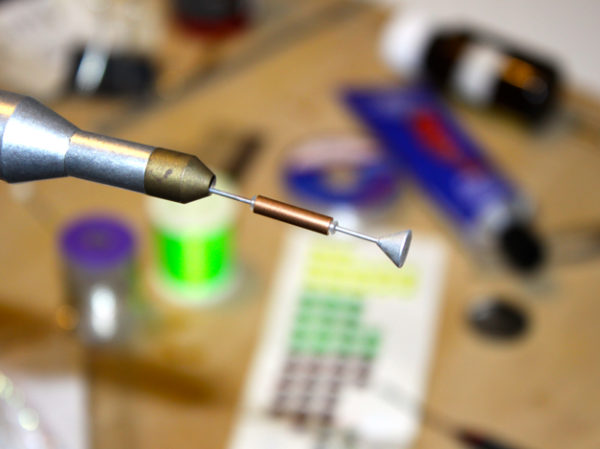
Small brass tube lined with plastic
The tube can be made of light plastic or heavy brass and everything in between. The leader is then threaded through the tube and the hook is tied on.
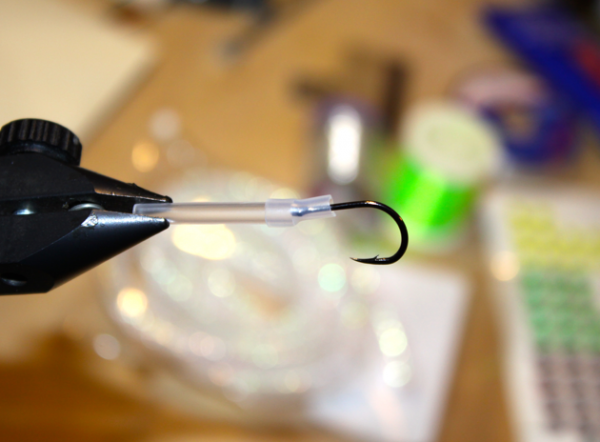
Silicone tube as a hook holder
We customarily have a small silicone tube at the end as a hook holder, but it is not critical. The tube usually slides up the leader after a fish is hooked. Thus they are more durable than classical flies. They range from so-called microtubes to several inches long brass tubes.
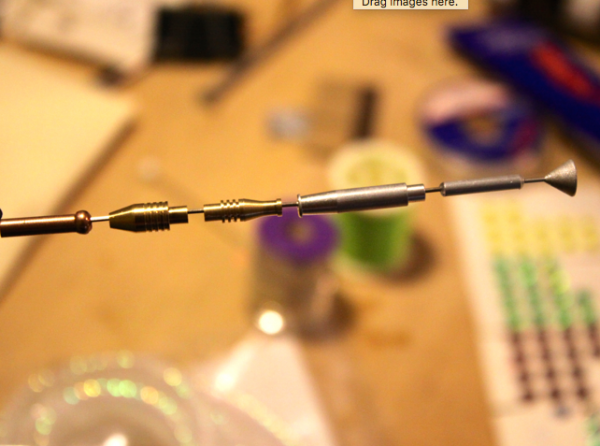
Assortment of weighted tubes
The tubes used can be made of plastic, aluminum, and brass lined with plastic.
Brass tubes understandably do sink well. The tube separates easily from the hook after a fish is hooked, and ride up the leader. Microtubes are not fashioned this way but we stick the knot into the tube.
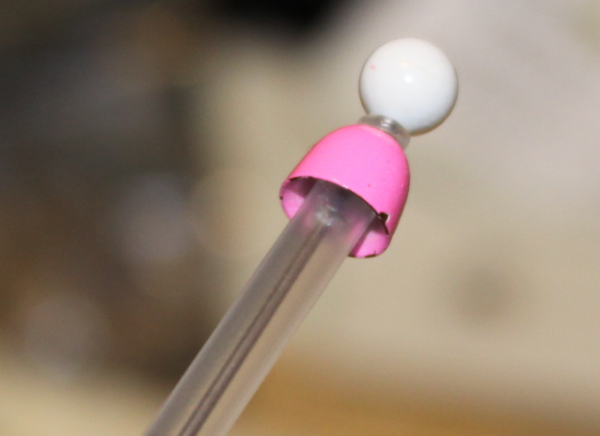
The cone with a thin tube is put onto a larger one
We can put eyes or cones onto the tubes to weigh them.
When using tubes the size of the hook is optional. It is best to use hooks with short shanks. Short shank moves less (shorter lever) when a fish is played.
A version of a dry fly is the so-called hitch tube used extensively when salmon fishing.
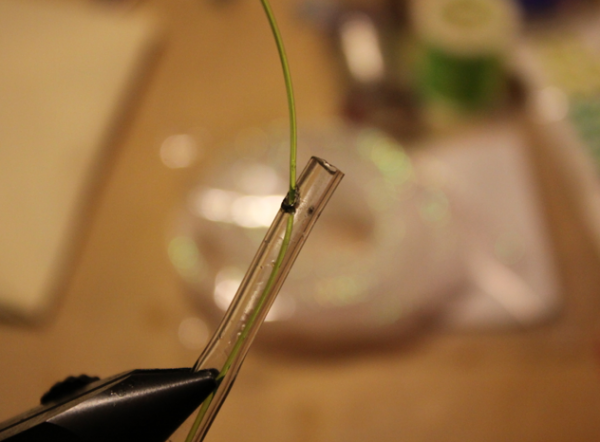
A hitch tube – the leader is threaded into the tube sideways
For a hitch tube, we use a plastic tube. Then we burn a hole in the sidewall in the forward part of the tube. The leader is threaded into the side hole and out through the end as usual. Then we tie the hook to the leader. We use this hitch tube by casting over the stream to the opposite bank. When the flow catches the line it drags the fly in the surface where it leaves a V shape as it travels to our bank again. The line must be kept taut. When a salmon attacks such a fly it is hair raising and unforgettable, since you can see it on the surface. Trout will also attack hitch tubes.
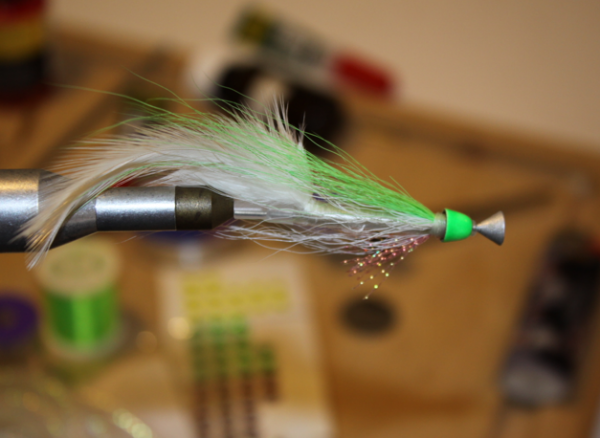
Deceiver tube with a cone
Tube flies are especially practical in the salt. The seawater corrodes the hooks and they will rust and a rusted fly is no good. This does not apply to tube flies since the hooks are separate. You can also vary the size of the hooks depending on the circumstances. It is easy to fashion a long and light tube with a short shank hook that is much lighter than the corresponding traditional fly because of the weight in the shank. This type of fly is much easier to cast. Very big hooks furthermore are harder to set than smaller sharper ones.

